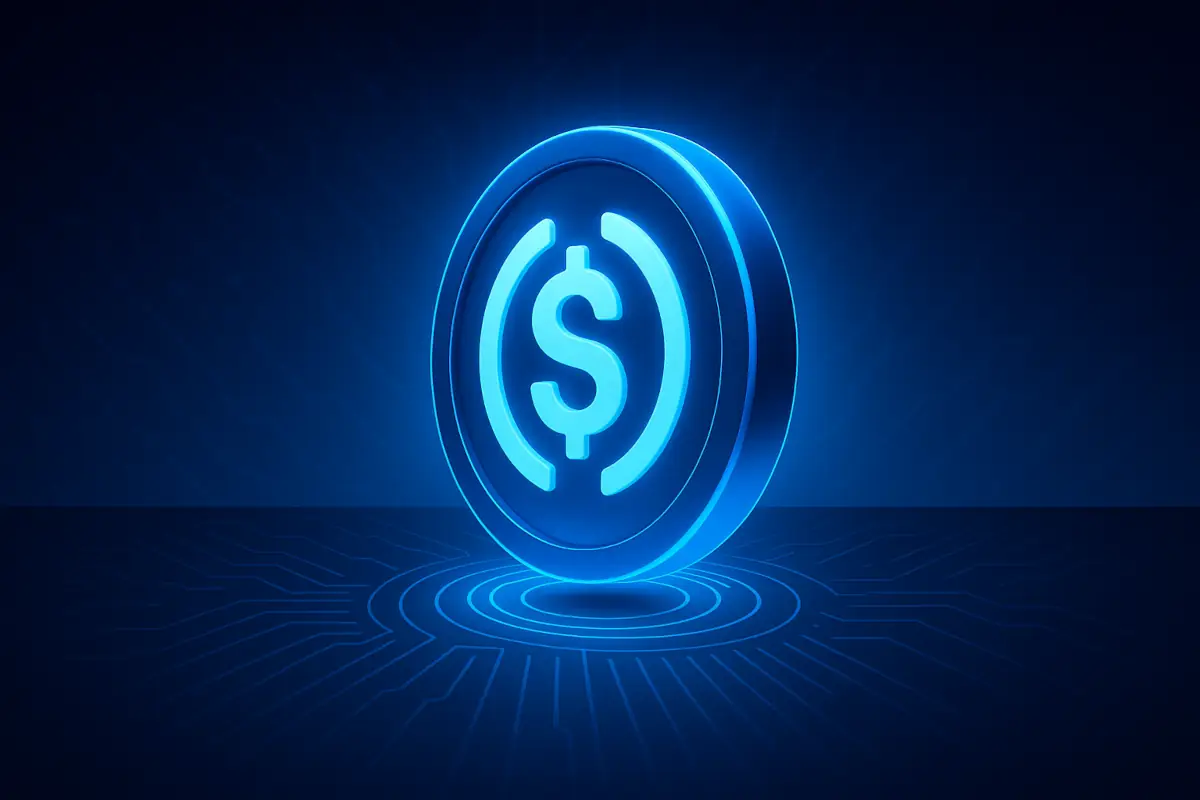The stablecoin sector has now surpassed $250 billion in total market capitalization, more than doubling in value since late 2023. This rapid expansion reflects a turning point for the industry, once seen as experimental but now becoming a central part of global finance.
The rise in adoption has coincided with clearer regulations, high-profile public listings, and new players entering the market. Stablecoins like Tether’s USDT and Circle’s USDC have become dominant, backed heavily by U.S. Treasuries, influencing broader financial markets.
Table of Contents
Tether vs. USDC – Who’s Backing the Stablecoin Boom?
Tether’s USDT leads the pack with a market capitalization of $153 billion. Circle’s USDC follows, holding over $61 billion. Together, the two account for over 85% of the total stablecoin market. Their reserves are primarily made up of U.S. Treasury Bills – 67% in the case of USDT and about 76% for USDC.
Circle’s approach has been conservative, keeping only cash and similar assets in its reserves. Tether, by contrast, holds a broader mix that includes bitcoin and gold. This demand from stablecoin issuers has contributed significantly to the U.S. Treasury market.
As of April 2025, the total U.S. Treasury debt stood at $28.6 trillion. Stablecoin issuers collectively now hold close to 9% of this amount or nearly 1% of all outstanding Treasuries. This means stablecoins are no longer a fringe financial tool, but have a growing macroeconomic influence.
Regulatory Changes Bring Confidence to the Sector
Two major regulatory shifts in the United States and European Union helped solidify stablecoin credibility over the past year. The EU’s MiCA framework came into effect fully in late 2024, with stablecoin-specific rules starting June 2024.
These require proper reserve backing, regular audits, public disclosures, and consumer protections. The result has been increased institutional interest, with firms now more willing to issue or hold stablecoins under these clearly defined standards.
In the U.S., the GENIUS Act passed the Senate with a 66–22 vote. It is the country’s first federal stablecoin legislation. The law applies different standards depending on the issuer’s size. Companies with less than $10 billion in market cap can operate under a state-based model, while larger issuers must meet strict capital, reserve, audit, and compliance rules. These larger issuers are also barred from paying interest on their tokens.
The law also clarifies responsibilities between the SEC, Treasury, and banking regulators and includes protections against money laundering. Together, these laws have created a clearer, more secure environment for stablecoin development.
Read also: What the GENIUS Act Means for Stablecoin Regulation
Circle’s Stock Peaks Over 230% on Day One
In June 2025, Circle Internet Group launched its IPO at $31 per share. On its first trading day, shares reached a peak of nearly $103. The offering raised over $1 billion, making Circle the first publicly traded stablecoin issuer.
This public debut signals strong investor faith in stablecoin firms and is expected to pave the way for other IPOs from crypto companies such as Kraken and Gemini. While Circle earns much of its revenue from interest on reserves, analysts have raised concerns about how interest rate cuts could affect income. Around 60% of Circle’s interest revenue is passed on to distribution partners.
Still, the IPO’s success reflects growing trust in the stablecoin model. CEO at Kronos Research Hank Huang said:
“Crossing $250 billion marks a turning point. Stablecoins are no longer experimental, they’re essential.”
New Stablecoins Expand Competition
Two major launches in 2025 added fresh competition in the stablecoin field. In March, World Liberty Financial (WLFI) released USD1. The coin is backed by U.S. Treasuries, cash deposits, and equivalents. It operates on Ethereum and Binance’s BNB Chain. Early backers of USD1 received $4 million in airdropped tokens, or about 47 USD1 each.
USD1 has quickly grown to a top-5 ranking globally, with a market cap of $2.15 billion. The token is now listed on major platforms like Binance, HTX, PancakeSwap, and Uniswap. WLFI’s launch strategy included appealing to politically connected and institutional users, giving the coin a wider reach from the start.
Ripple also entered the market in December 2024 with RLUSD, following its approval by the New York Department of Financial Services. RLUSD is backed by U.S. Treasuries and deposits and has been adopted into Ripple’s own treasury and payment systems. It has been listed on multiple platforms including Uphold, Bitso, MoonPay, Bitstamp, and Mercado Bitcoin.
These two additions mark a shift in the market, which was once dominated solely by USDC and USDT. With new entrants gaining ground, competition among stablecoins is expected to increase.
Read also: RLUSD Stablecoin 4 Months After Launch Exceeds Expectations
Stablecoins Growth May Double by 2026
The total supply of stablecoins stood at around $120 billion in October 2023. In the months since the figure has more than doubled. Kronos Research predicts the market could double again by 2026. As regulation settles, more firms are likely to issue their stablecoins, and institutional adoption is expected to rise.
Stablecoins now influence U.S. government borrowing, consumer credit, and investor strategies. With a quarter trillion dollars in circulation, these tokens are no longer a crypto niche but a part of the broader financial structure.




